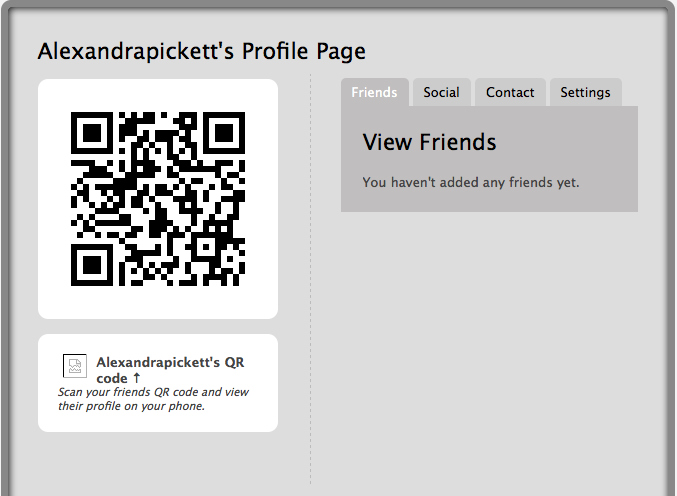Ask yourself, "Will it help you achieve your learning objective “better, faster, safer, easier, or cheaper?”
I have had the opportunity to work with thousands of online faculty and to observe hundreds of thousands of online students in the SUNY Learning Network (SLN). From that vantage point I can sense/feel the increased interest in and usage of audio and video-enhanced online instruction/communications/interaction. And at work I feel it too. Skype and elluminate meetings, workgroups, and collaborations are a regular thing now. I see a definite trend away from purely text-based interaction in the world of online teaching and learning from both faculty and students. And though that certainly does not mean that text-based communications will disappear, there is something about audio and video communications in instruction that significantly enhances the experience for faculty and students in terms of creating more engaging content presentation, and enhancing interaction, collaboration, and feedback. (My friend Phil Ice has done some research on this. http://citeseerx.ist.psu.edu/viewdoc/download?doi=10.1.1.137.2582&rep=rep1&type=pdf). In my efforts to explore what it really means to be learner-centered as an online educator in my own online instruction, I have come to the conclusion to really do that, I have to let go and let students be engaged and express that in ways that are meaningful to them and their lives. This is not as easy …or comfortable as it sounds. I would probably be characterized as one of the most learner-centered online instructor by friends and colleagues …and yet I struggle – so I know how hard it is.
I also feel that an LMS that locks down and controls access and ownership of student content is problematic and contributes to my frustration and struggle. I mean if we are asking them to generate content, then why does their access to their content go away at the end of the term? How can you call a tool a blog if they don’t own it, can’t personalize it, it is NOT public AND it (and their content) gets taken away at the end of the term – and so on… This tension I feel between the LMS and student-created content is one of the main reasons I teach mostly “outside the box” and have been presenting everywhere I can about teaching and learning in the cloud: http://prezi.com/yyzcr9_btox6/teaching-learning-in-the-cloud/
I always tell the faculty I work with NOT to get attached to “tools” as they change, get bought and killed, or just disappear… I tell them to be fearless and that there are tons of tools, so that if one goes away there are others to take its place http://www.appappeal.com/web-2-0-application-world-mosaic/ I tell them that you need to start with a learning objective, NOT the tool, and you just need criteria to evaluate tools – Does it help you achieve your learning objective “better, faster, safer, easier, or cheaper?”
better, faster, safer, easier, or cheaper: my criteria for evaluating technology for instructional purposes
When evaluating technology for instructional purposes I see 3 main areas that have the potential to be enhanced in some way via the use of some technology.
Those areas are (1) content presentation,(2) interaction/collaboration, and (3) feedback.
I also always always always start from pedagogy, not the technology, or the technology solution. It is not about using technology for technology sake. It is technology in the service of pedagogy, not the other way around.
So, you have to start with a specific learning objective.
Then, consider: Does a tool or approach assist me to…? :
- Present content in a more effective or engaging manner.
- Facilitate collaboration or interaction with/between students in a more effective or engaging manner
- Provide feedback, or to assess students in a more effective or engaging manner.
Then, I apply my criteria: will this technical solution assist me to achieve my targeted learning objective “better, faster safer, easier, or cheaper” in one of those 3 areas listed above.
If so, then there is solid rationale to explore the use of the tool or approach or solution for instructional purposes.
It is about enhancing learning for the student- making it more engaging and/or effective, and it is about making me, the instructor, more effective and/or engaging – this can include making me more efficient, so that I have time to spend more time interacting with students, diagnosing misperceptions, providing feedback, modeling behaviors…etc.
top 10 cooltools for 2011
Here is my “Top 10” list for 2011:
- jumpscan – qrcode generator creates a smartphone scan-able code to quickly and easily share contact info., social media, website, and email address.
- quora – Social Q&A. you can follow not only people, but topics and questions.
- ipad – The iPad is the first tablet computer developed by Apple Inc. Announced on January 27, 2010, it is part of a device category between a smartphone and a laptop computer.
- amplify – Amplify gives an easy way to clip, share and spark conversation around articles, blog posts or anything else you read on the web.
- audioboo – a mobile & web platform that allows you to record and upload audio.
- voki – create personalized speaking avatars and use them on your blog, profile, and in email messages.
- diigo – social bookmarking tool.
- ning – a social network platform that i used to create : http://slnfacultyonline.ning.com/ – JOIN!
- youtube – watch and share originally-created videos & .vyou – broadcast video structured as conversations.
- glogster – multimedia online posters.
did not quite make the list, but still very cool:
